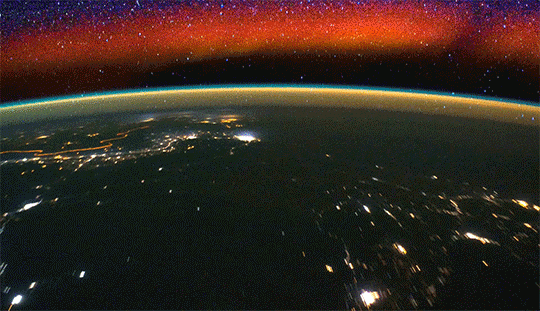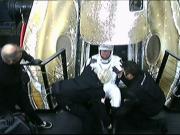
NASA launched its Global-scale Observations of the Limb and Disk, or GOLD aboard a host commercial communication satellite on January 25, 2018, atop Ariane 5 launcher. The mission aims to investigate dynamic intermingling of space and Earth's uppermost atmosphere.
NASA's first commercial host SES-14 communication satellite which hosts the GOLD mission has been built by Airbus for Luxembourg based satellite company SES.
The GOLD mission aims to study the boundary of Earth's atmosphere which is guarded by a layer of charged particles known as the ionosphere and co-existing neutral layer known as thermosphere. These layers commingle and influence each other in accordance with various factors like terrestrial weather, space weather, and Earth's own magnetic field.
Richard Eastes, GOLD principal investigator at the Laboratory for Atmospheric and Space Physics at the University of Colorado Boulder said, "The upper atmosphere is far more variable than previously imagined, but we don't understand the interactions between all the factors involved. That's where GOLD comes in: For the first time, the mission gives us the big picture of how different drivers meet and influence each other."
This little understood upper atmosphere region responses to the terrestrial weather in the lower atmosphere from below and the space weather from above and undergoes dramatic changes within an hour.
Events like hurricane and tsunamis in the Earth's lower atmosphere generate waves which reach this space interface resulting in the changing wind patterns and wider disruptions. Energized particles and solar storm from the outer space carries electric and magnetic fields which have potential to disrupt the Earth's space environment. These factors make it difficult to predict the changes in the ionosphere and the possible impacts of it.
The GOLD mission aims to investigate the changes occurring in this region. The mission is the first of its kind to provide data on the changes in space weather and overall climate changes on an hourly basis. The study has greater importance in space science as low-Earth orbiting satellites, space stations and communication signals including radio waves and GPS signals travel through the ionosphere.
Elsayed Talaat, heliophysics chief scientist at NASA Headquarters in Washington said, "The first meteorological satellites revolutionized our understanding of - and ability to predict – terrestrial weather. We anticipate GOLD will give us new, similar insight into the dynamics of the upper atmosphere and our planet's space environment."
The 80-pound instrument works as an imaging spectrograph that breaks light into its component wavelengths and measures its intensity. It specifically measures ultraviolet light to create a full-disk ultraviolet image of Earth from its location in Western Hemisphere.
Scientists can determine the temperature and relative amount of different particles, including atomic oxygen and molecular nitrogen, in the neutral atmosphere and understand how these neutral gases affect the ionospheric conditions. This information will produce the first map of the upper atmosphere's changing temperature and composition above America.
NASA will also launch a similar mission this year known as the Ionospheric Connection Explorer or ICON to study the ionosphere and neutral upper atmosphere. The ICON is all set to fly at a distance of 350 miles from Earth while GOLD makes its study from a height of 22,000 miles above the Western Hemisphere.








